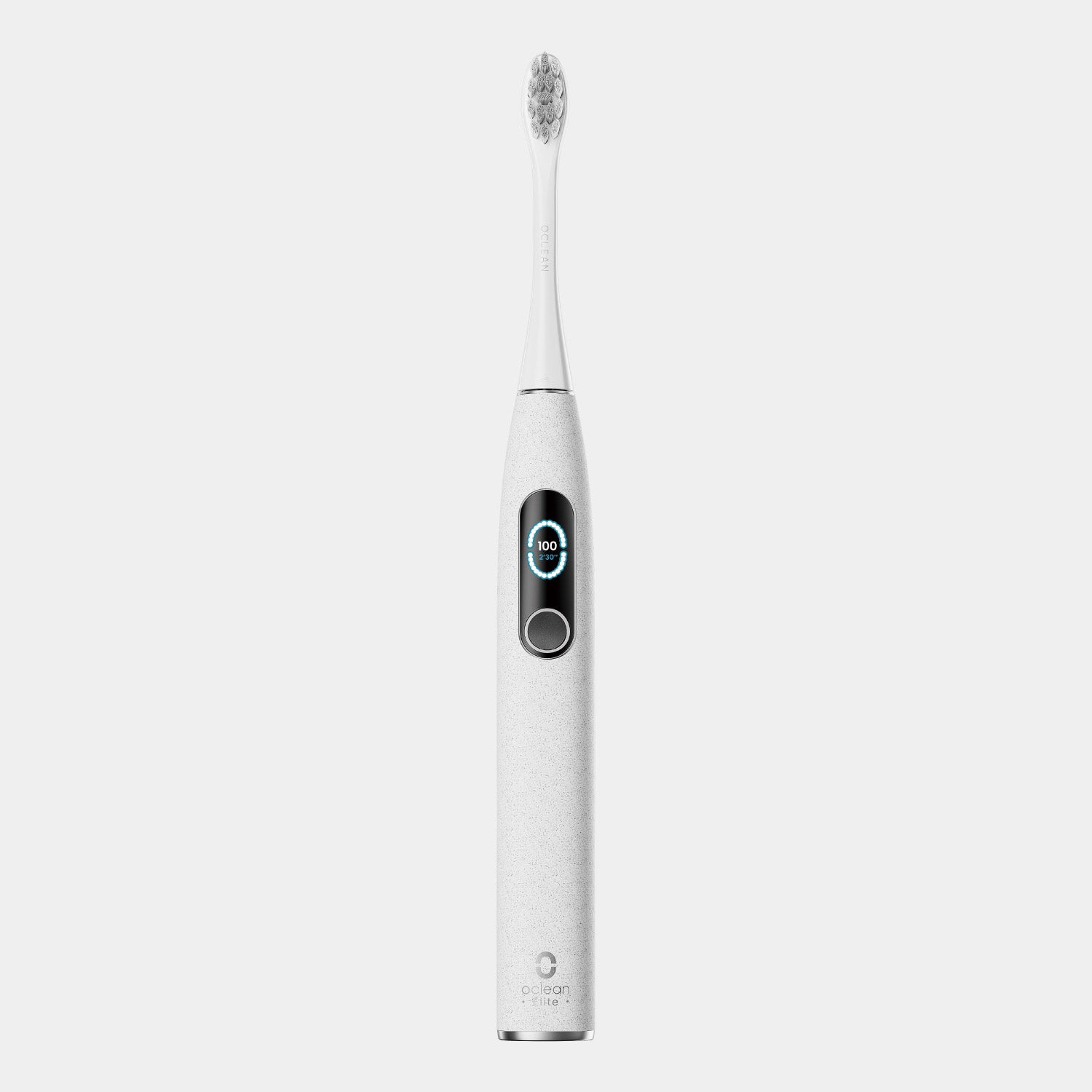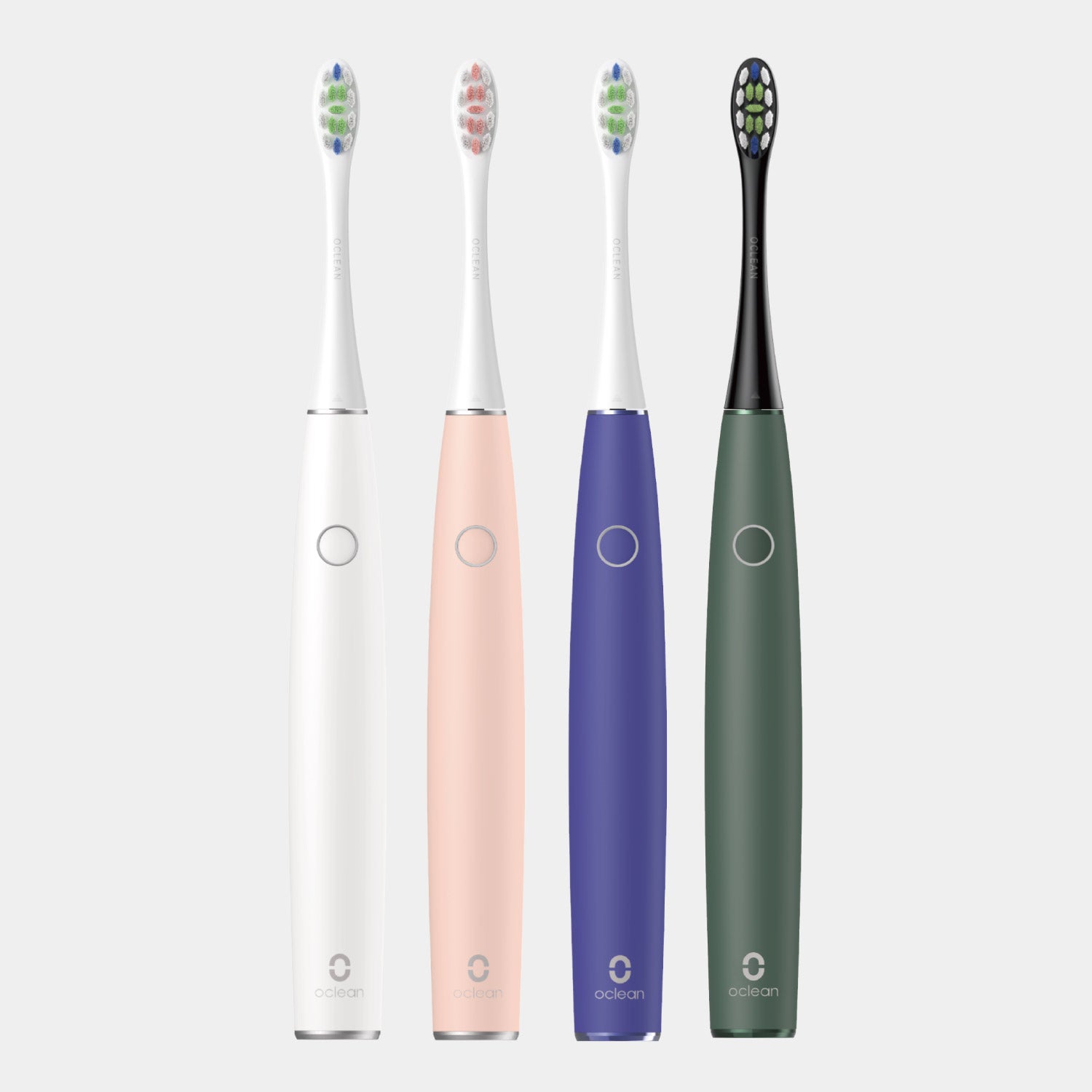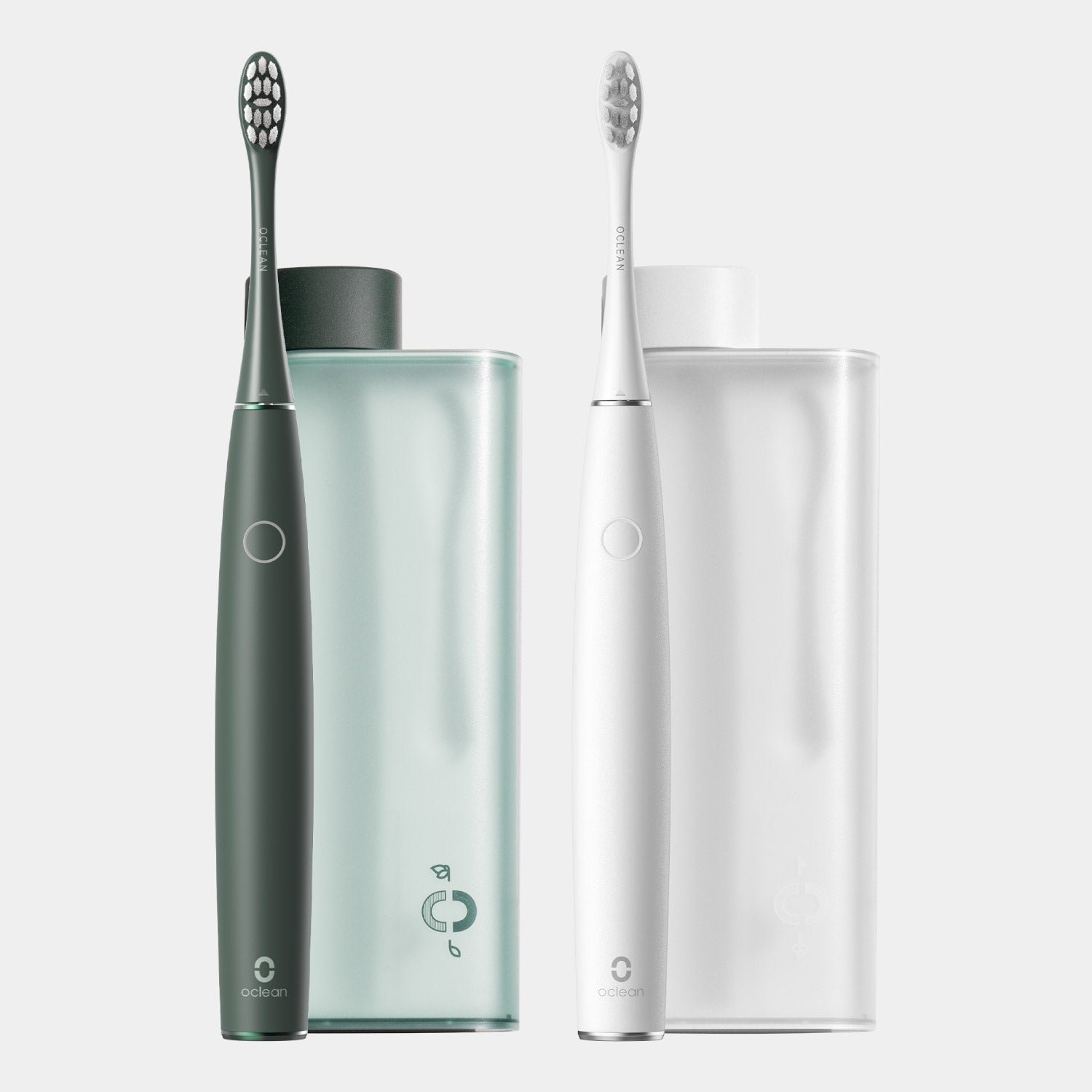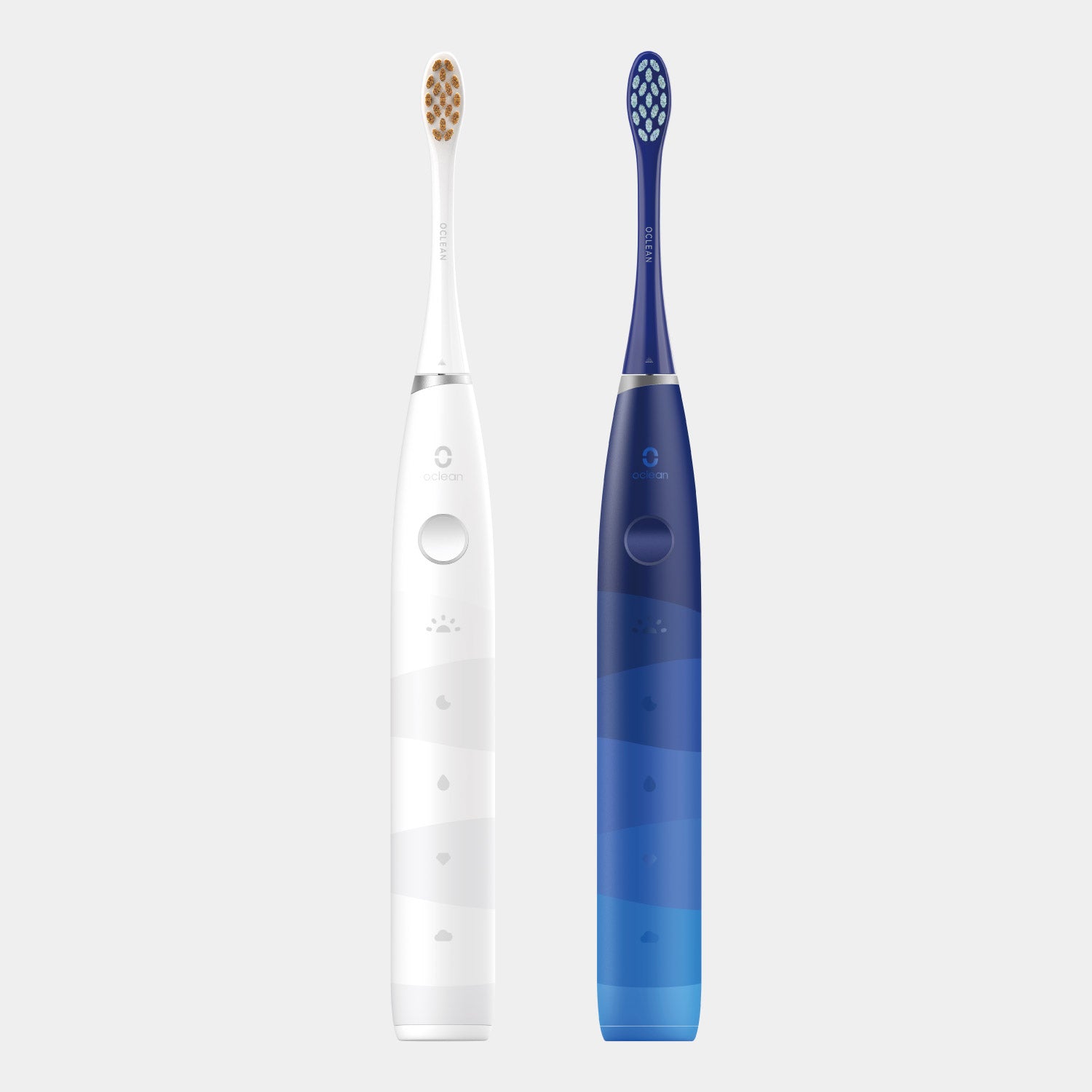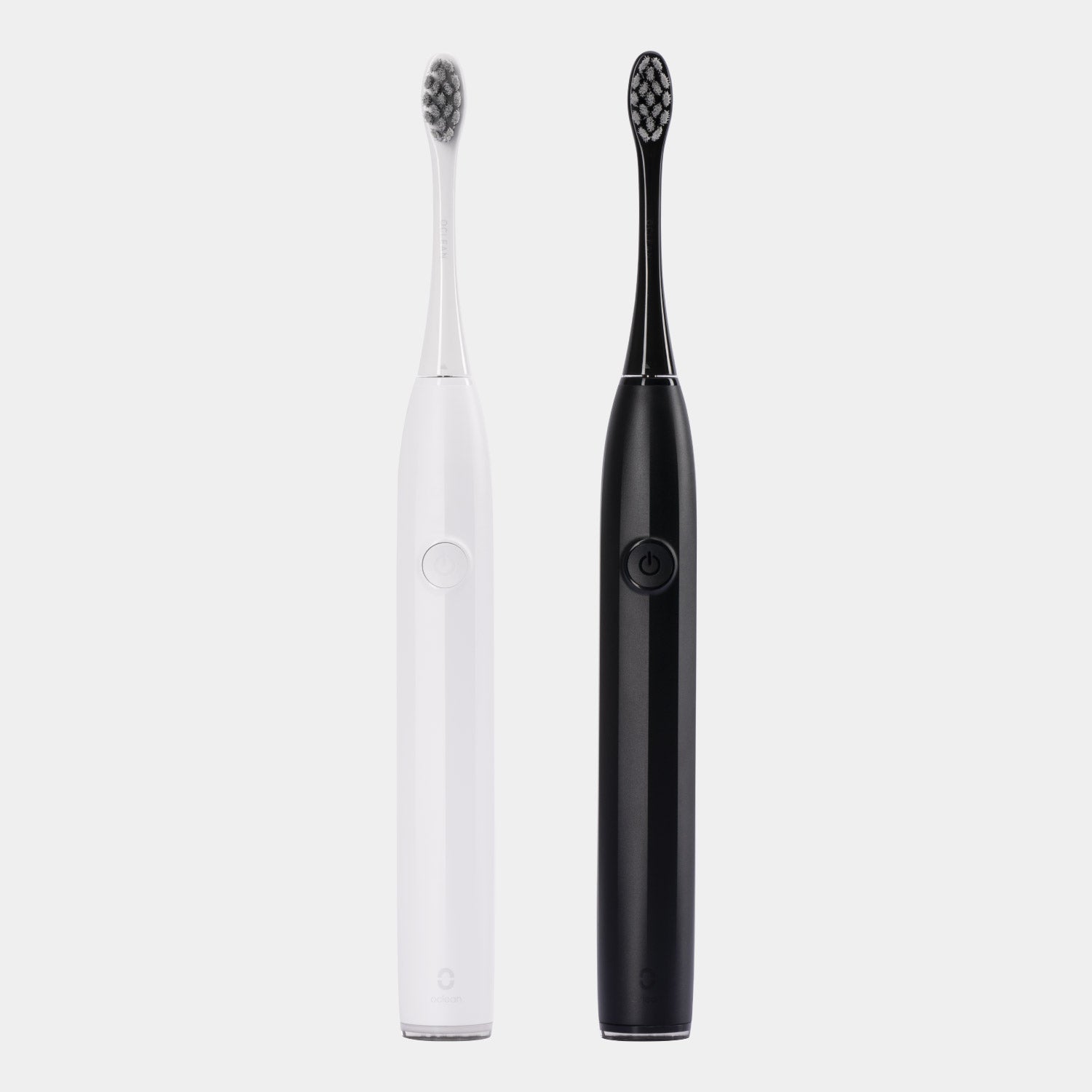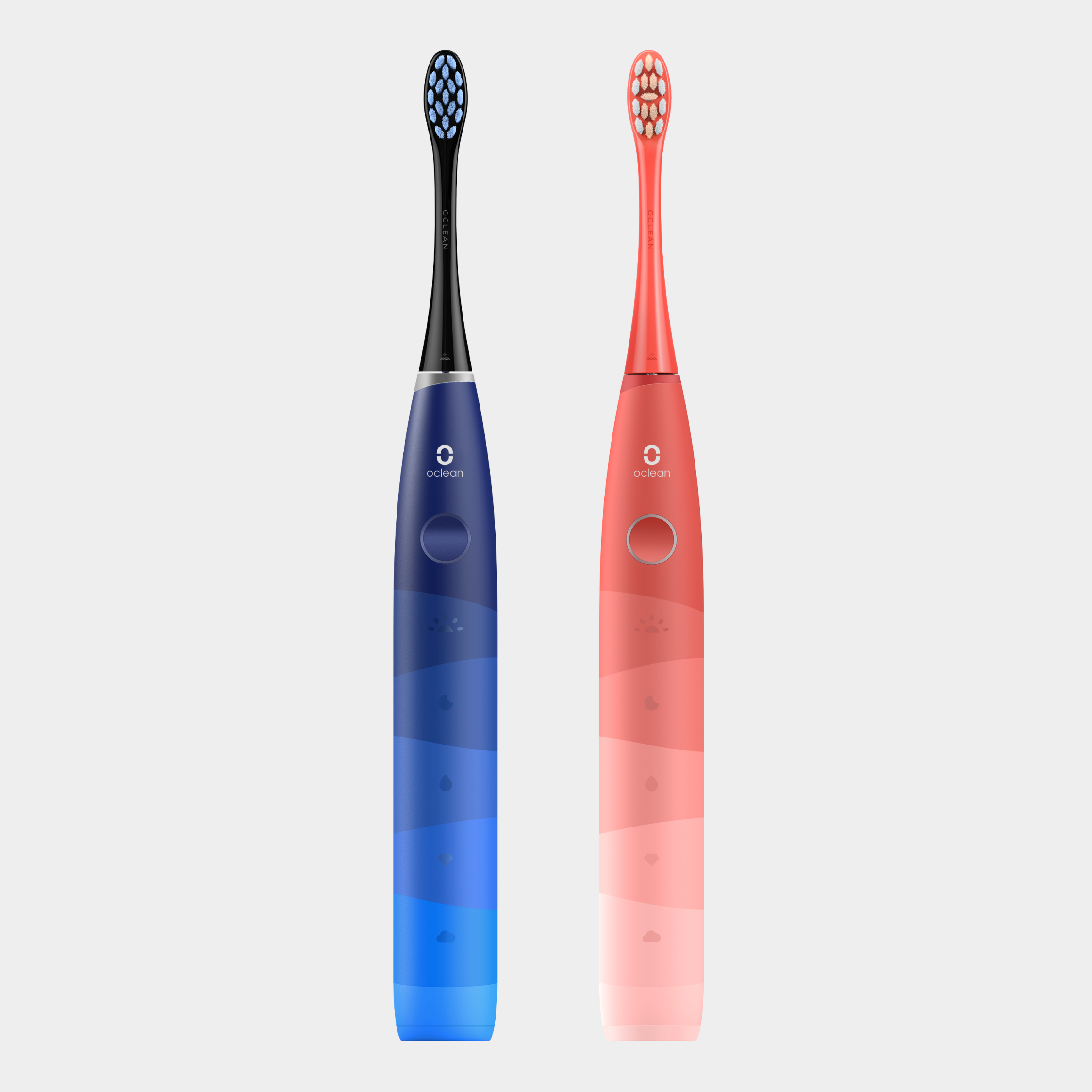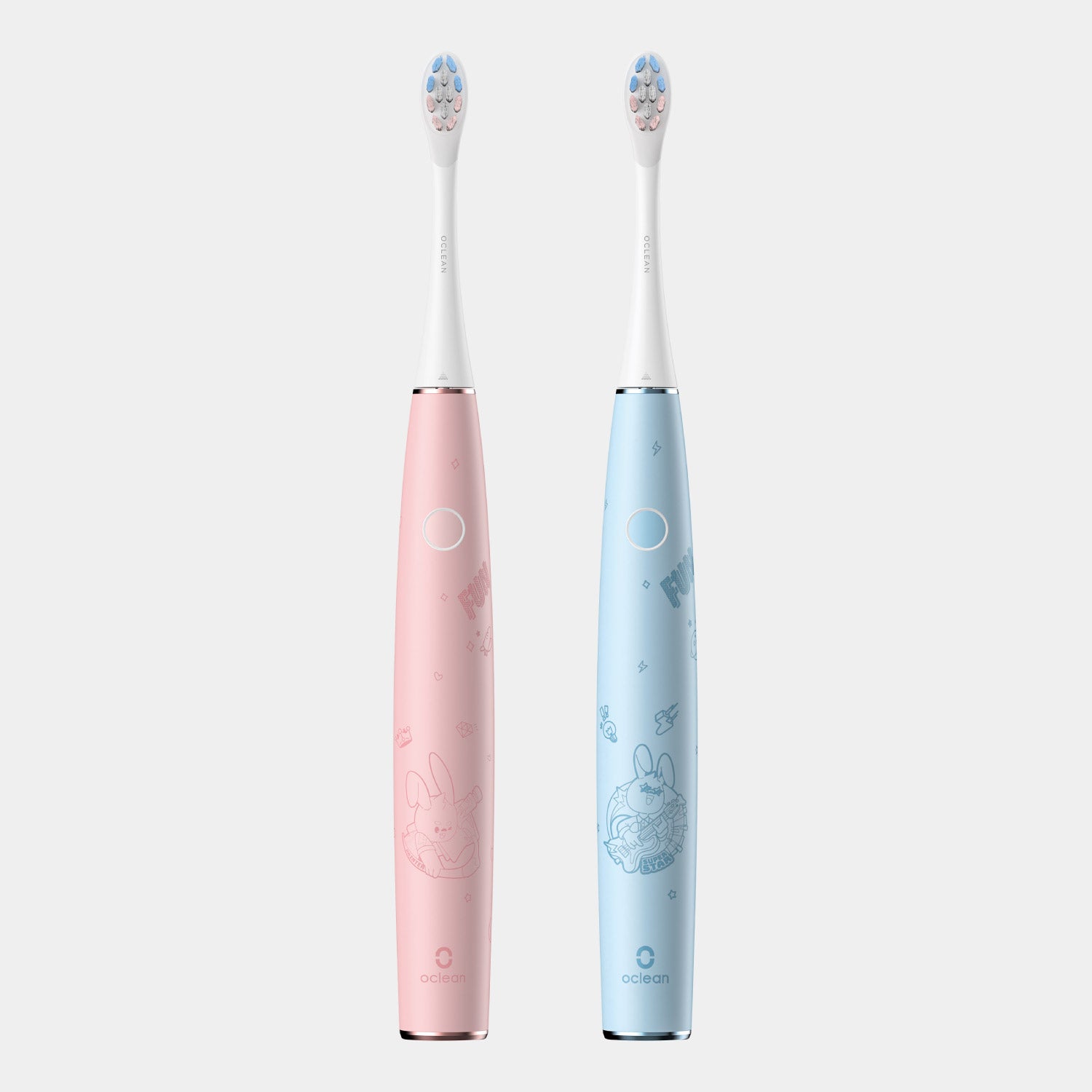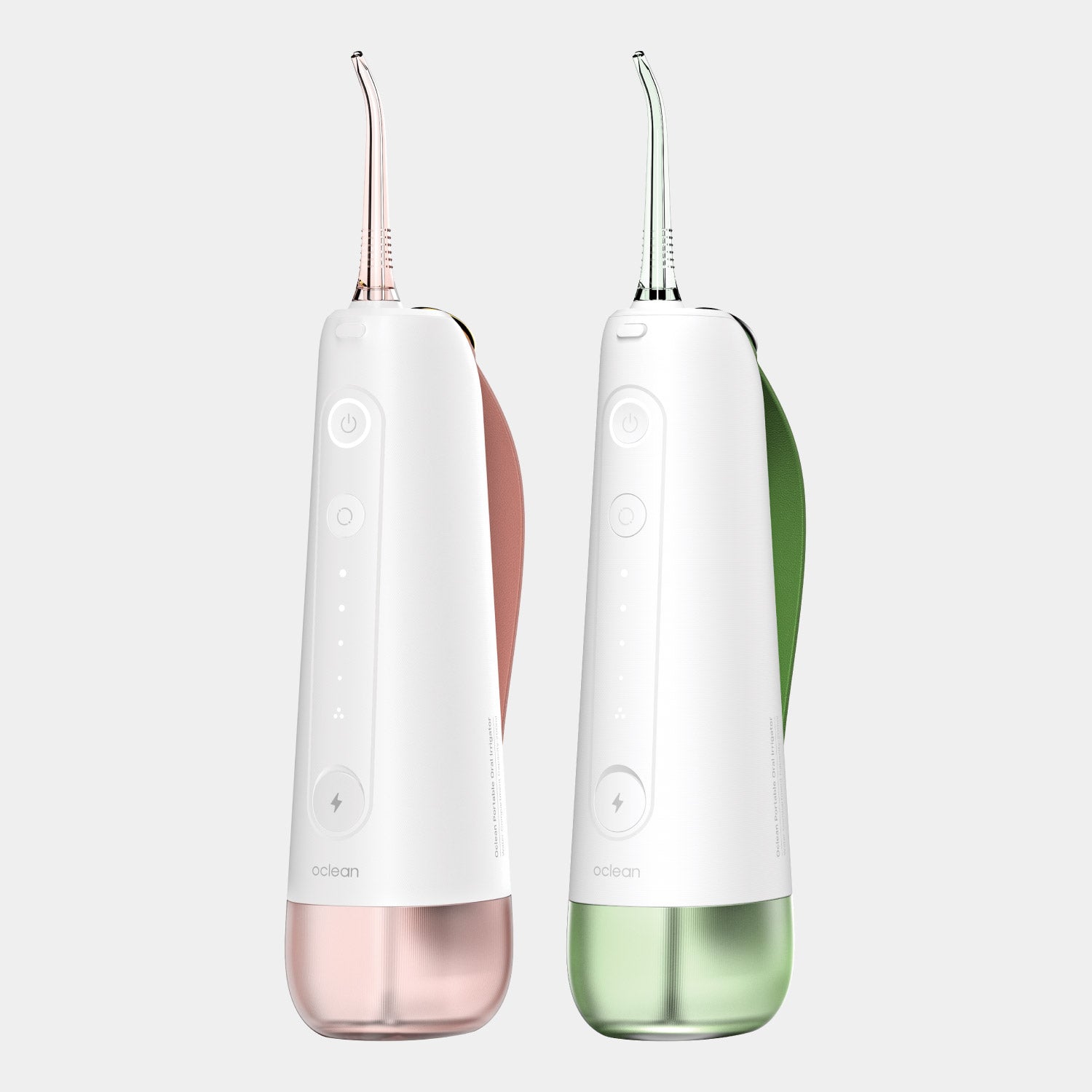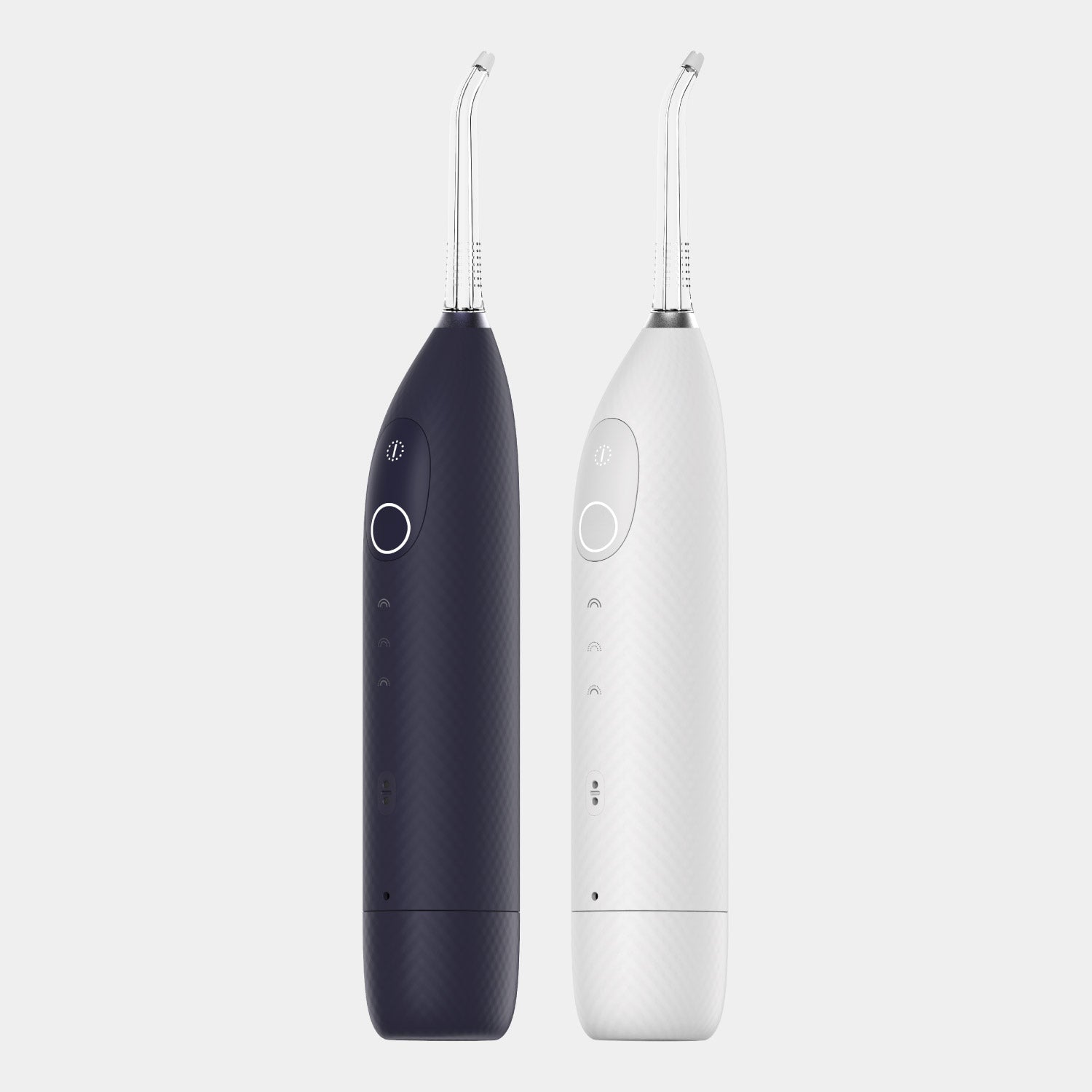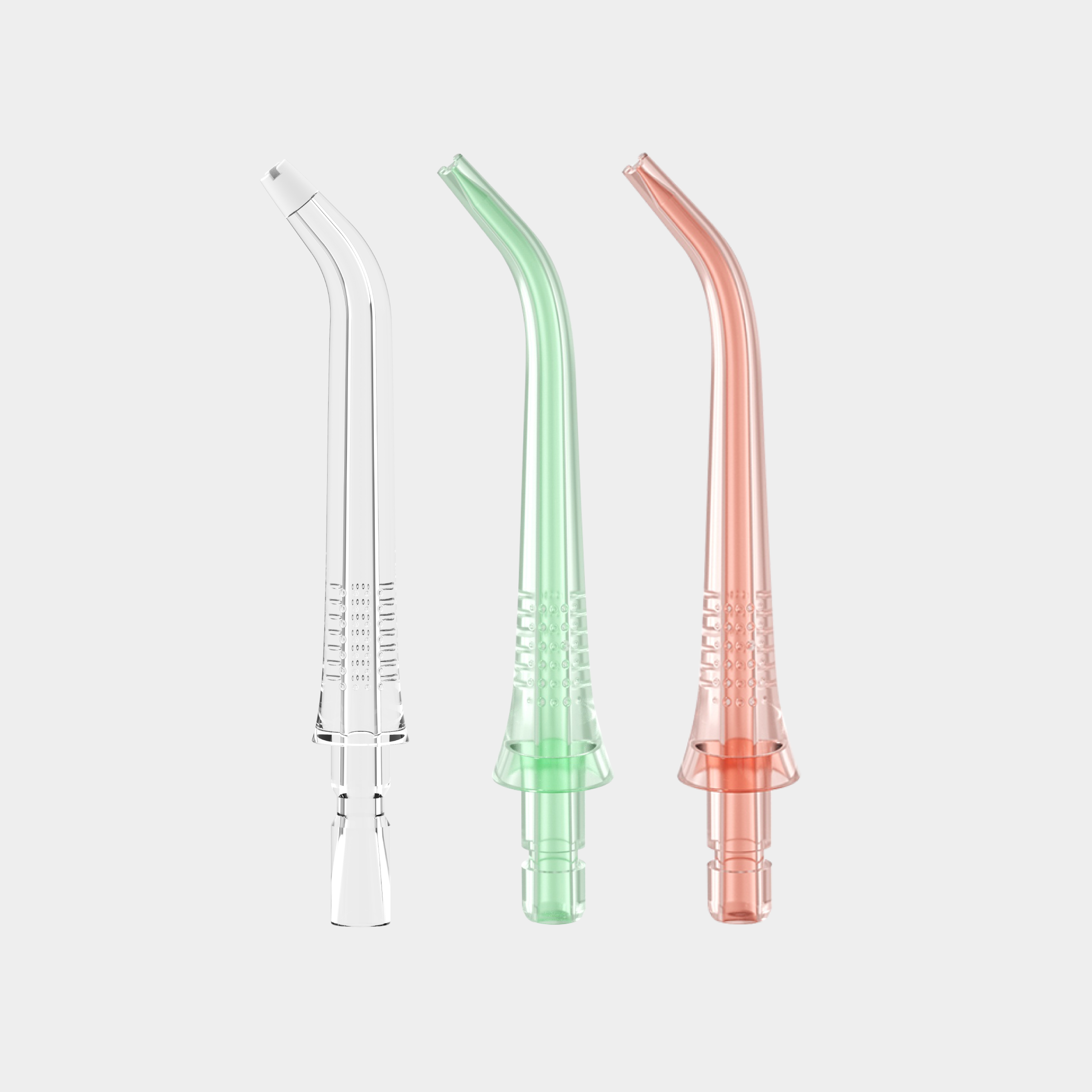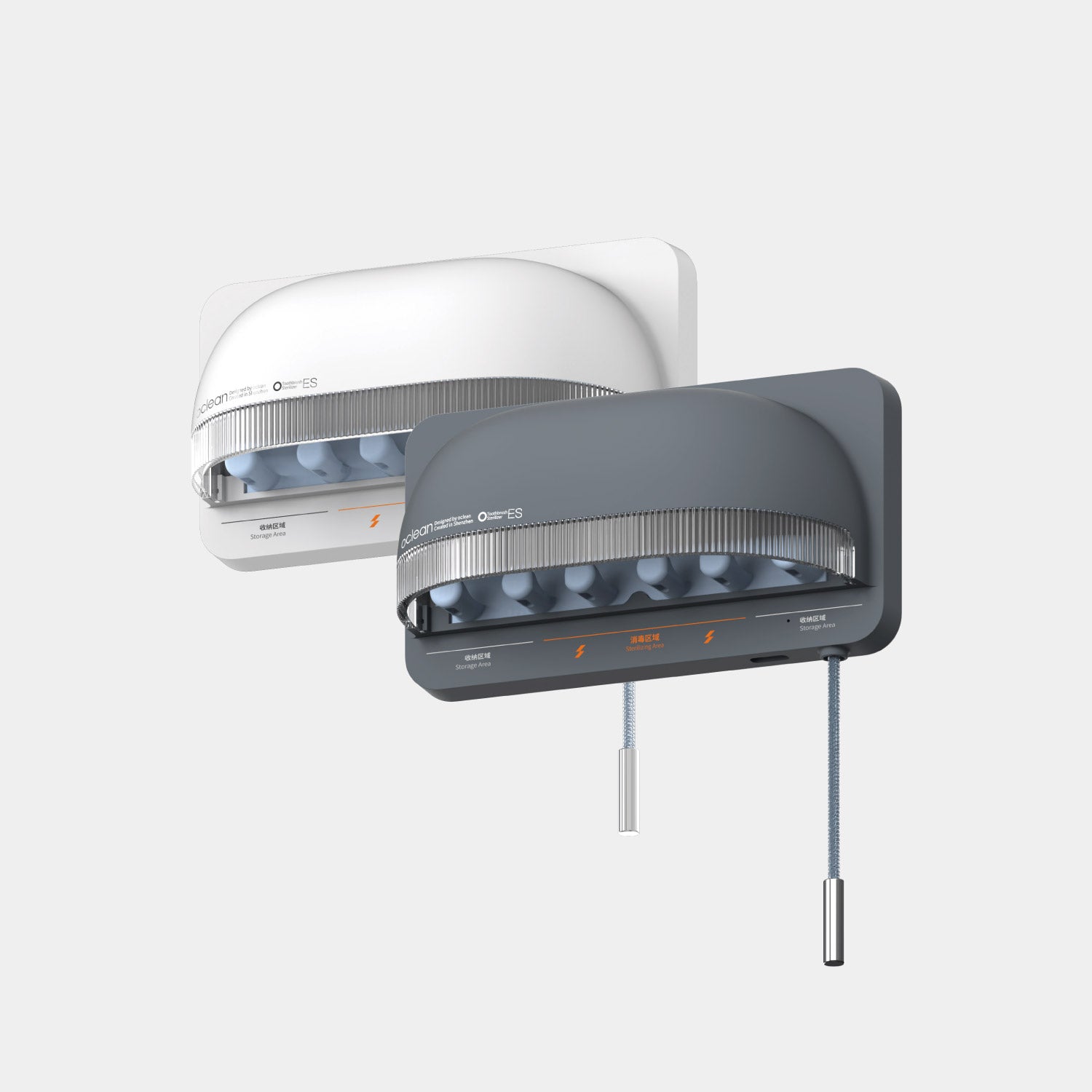Gum disease is one of the most common conditions in the world, leading to numerous oral consequences. Yet, have you ever wondered if it is possible to treat it at home? Discover in this article what you can do at home with the appropriate tools, like using sonic toothbrushes and portable water flossers while understanding when to seek professional dental care.

What Is Gum Disease?
Gum disease refers to the inflammation of the soft tissues surrounding your teeth. It involves the slow and constant affection of your gums, alveolar bone, and ligaments that support and protect your teeth and allow them to withstand chewing forces. Initially, it starts as an adverse reaction to local irritants that make your gums swell and bleed, but it can later evolve to affect other crucial structures, compromising your teeth in the long term. While gum disease is, most times, easily preventable, it still remains one of the most common oral affections.
Common Causes of Gum Disease
The most frequent cause of gum disease is the presence of local irritants like bacterial plaque buildup and tartar formation, which are directly related to an inadequate hygiene routine. This harmful bacteria accumulation damages the soft tissues around your teeth causing the usual signs and symptoms. As a result, preventing gum disease in all its forms is as easy as maintaining excellent oral hygiene and attending regular check-ups for dental cleaning.
On the other side, gum disease is also related to some systemic conditions like diabetes, autoimmune diseases, and certain medications like antianxiety drugs, antidepressants, and anticonvulsants. Finally, it can also be influenced by harmful habits like smoking.
Gingivitis vs. Periodontitis: Key Differences
Gingivitis is the early and reversible stage of gum disease, confined to the most exterior layer—gums. However, when the bacteria present in the plaque and tartar start invading the deep layers around your teeth, it becomes an irreversible condition called periodontitis. This last stage typically leads to irreversible damage to key supporting tissues like bone and ligament, causing gum recession and bone loss.

Why Dental Hygiene Is Crucial for Healthy Gums
As we stated before, bacterial plaque and tartar accumulation are the main culprits for gum disease, whether it is gingivitis or periodontitis. Without the appropriate hygiene measures, it’s easy for harmful and opportunistic bacteria to damage your protective soft tissues and lead to inflammation and infection. Fortunately, preventing plaque formation and accumulation disrupt the entire chain, preventing many dental issues early on.
Maintaining good oral hygiene with the appropriate tools like a sonic toothbrush, water flosser, or dental floss drastically reduce the risk of gum disease and other common oral diseases like cavities.
Common Signs and Symptoms of Gum Disease
The most frequent gum disease symptoms include the following early warning signs:
● Bleeding gums when eating or brushing
● Soft or tender gums
● Red or purplish gum colorations
● Persistent bad breath
Some advanced symptoms of gum disease also may include:
● Gum recession, which manifests as exposed roots or hypersensitivity.
● Loose or excessively mobile teeth.
● Tooth pain when eating and chewing.
● Abscess formation or pus accumulation.
● Gum swelling.
● Spontaneous gum bleeding.
● Bad or unpleasant metallic taste.
● Fever.
● Swollen jaw or face.
While some people might experience one or multiple of these signs and symptoms simultaneously, you should always consider them as warning signs and start taking measures immediately.

Natural Remedies and Prevention for Gum Disease
Preventing Gum Disease Before It Starts
The easiest and most cost-effective treatment for gum disease is prevention with good oral hygiene, excellent hydration, and keeping a balanced diet, avoiding sugary foods that may increase bacterial activity.
At-Home Remedies for Healthier Gums
You can use saltwater warm rinses, hydrogen peroxide mouthwash, and herbal holistic remedies like turmeric or oil pulling to reduce mild inflammation in easy stages of gum disease. Nowadays, natural approaches like oil pulling have shown promising scientific outcomes, reducing harmful bacteria and setting a great alternative to fight gum inflammation.
At-Home Treatment for Gum Disease
Using a Sonic Toothbrush for Effective Cleaning
Effectively removing dental plaque is the first line of defense against gum disease. While practicing the appropriate toothbrush technique ensures great manual results, using a sonic electric toothbrush that vibrates at high speeds is great for removing more plaque more easily.

How a Water Flosser Can Improve Gum Health
Water flossing is an amazing addition to toothbrushing. While using the appropriate brushing technique with fluoride toothpaste removes bacterial plaque from most free sides of your teeth, removing plaque between them is another story—not even the best toothbrush or technique can reach these areas without the appropriate tool.
For years, dental flossing has been the best way to remove plaque from these interproximal spaces. However, the modern world allows you to have a dental water flosser/oral irrigator like Oclean W1 at your disposal in the blink of an eye—a device that flushes out bacteria from deep pockets, reducing inflammation and improving your gum’s health drastically.
Most experts agree that dental flossing and water irrigation are absolutely indispensable for people with gum disease, independently of its severity.

Can You Cure Periodontitis at Home?
When Home Treatment Isn’t Enough
While early stages of periodontal disease like gingivitis are reversible with the right measures, advanced periodontitis requires professional deep cleaning and treatment. Furthermore, it is virtually impossible to remove attached tartar to the root’s surface inside the deep pockets that appear in periodontitis unless you use specialized professional equipment. In consequence, although you can treat and address gingivitis caused by local irritants with good hygiene practices, you cannot recover bone loss, remove tartar, or treat gum recession at home.
The Dangers of Ignoring Periodontitis
Periodontitis can have drastic and devastating consequences in your mouth if it’s left untreated. Moreover, due to its chronic and slow appearance nature, it can go unnoticed until it is too late to treat it at home. In some severe cases, periodontitis can lead to tooth loss, jawbone damage, and increased heart disease risk, among other systemic diseases.
How to Treat a Gum Infection at Home
There are several antibacterial rinses that you can use at home to significantly reduce bacteria and improve gum infections. Some antibacterial rinses include antiseptic mouthwashes like:
● Hydrogen peroxide
● Commercial oral mouthwashes with fluoride, cetylpyridinium chloride, or chlorhexidine.
● Natural approaches with turmeric, oil pulling with coconut oil, or other natural essential oils.
These rinses can reduce gum pain and inflammation considerably, while using cold compresses and maintaining an anti-inflammatory diet may help reduce gum swelling in the long run.

When Should You See a Dentist?
Any sign or symptom of irreversible gum disease is more than enough to go see a dental professional. Therefore, if you have constant pain, excessive bleeding, loose teeth, or a swollen face, it’s time for a dentist visit. Keep in mind that although it might seem harmless, periodontal disease can have an enormous impact on your oral and general health. Also, remember that periodontitis causes gum recession and bone loss, which are irreversible and complex conditions to treat, even in modern dentistry.
Professional Treatments for Gum Disease
Professional treatment for gum disease may include:
● Scaling and Root Planing: it consists of deep cleaning for gum disease, made with specialized instruments that remove the plaque and tartar attached to your teeth beneath your gums, also known as gum pockets.
● Periodontal Surgery: Some advanced cases may require a surgical approach that can include gum grafting by taking gum from healthy areas to replace lost tissue or surgical cleaning to remove hard-to-reach tartar with conventional techniques.
● Bone Graft: It is a revolutionary surgical technique that allows dentists to guide your body to create new bone using multiple techniques that include autologous grafts of bovine bone.
What to Do If You Already Have Gum Recession
Can Receding Gums Grow Back?
Unfortunately, no. However, the appropriate care can prevent further recession and keep the remaining gum tissues healthy and strong.
Best Hygiene Practices for Receding Gums
Here you have a list of proven recommendations to avoid receding gums:
● Discard your hard-bristle manual toothbrush immediately, as it can cause more damage than good, even with the best brushing technique.
● Consider using a sonic toothbrush to easily remove dental plaque and prevent tartar buildup through vibration without hurting your gums.
● Use dental floss every day and use a water flosser.
● If you choose a manual toothbrush instead of an electric one, use a soft-bristle toothbrush and avoid aggressive movements that may hurt your gums.

Best Practices for Periodontal Patients
Daily Oral Hygiene Routine
You may have heard it multiple times by now, but it’s no exaggeration—keeping good hygiene is the best way to prevent most common oral conditions, including gum disease. Even when your gum issues aren’t solely caused by bacterial plaque, correct hygiene is essential to prevent further damage and maintain your mouth in the best shape possible. Thus, here are some essential best practices to prevent gum disease or keep your mouth healthy during your recovery:
● Brush at least twice daily or after each meal with a sonic toothbrush and fluoride toothpaste.
● Floss daily with conventional dental floss or a water flosser to clean deep gum pockets.
● Use antibacterial mouthwash to kill and decrease harmful bacteria.
● Maintain a healthy diet low in carbs and refined sugars and filled with antioxidants, minerals, and vitamins.
● Never forget the tongue during your hygiene routine. Use a tongue scraper or your conventional toothbrush inside out to remove debris and food particles.
● Keep yourself hydrated all the time.
FAQs About Gum Disease
Can I reverse gum disease naturally?
While gingivitis can be reversed with proper oral care, periodontitis requires professional treatment without exceptions.
How long does it take to heal gum disease?
It all comes down to your individual case and the cause of the conditions. Mild cases can improve in 2–3 weeks with proper brushing and flossing, but advanced cases might require months of care to show significant improvement. In some cases, the complete recovery and restoration may take years, especially when there’s bone loss and tooth loss involved.
What foods improve gum health?
Great options include leafy greens, dairy, probiotic beverages, fruits, and crunchy vegetables to help strengthen gums and reduce inflammation.
Is a water flosser better than regular flossing?
While it may be debatable for most healthy people, a water flosser is more effective for people with braces, deep pockets, or sensitive gums, as it can reach places that are almost impossible for regular techniques.
Can I use a sonic toothbrush if I have sensitive gums?
Sure! A sonic electric toothbrush is actually great for sensitive gums because it provides a gentle yet effective clean without an aggressive motion. Many models, like the Oclean X Elite Sonic Toothbrush, have adjustable intensity settings to prevent irritation and adjust to your needs and intentions.
How often should I use a water flosser for gum disease?
For the best results, use it at least once a day, especially if you have early-stage gum disease—gingivitis. Devices like the Oclean W1 Portable Water Flosser help remove plaque and bacteria from deep gum pockets where regular floss can’t reach.
Conclusion: Take Action to Protect Your Gum Health
While it might look daunting, gum disease is typically preventable and, in its early stages, reversible with the right oral care routine. The appropriate hygiene routine with the correct tools, like a sonic toothbrush, mouthwash, and oral irrigator, allows you to remove plaque, prevent tartar formation, reduce inflammation, and protect your gums from disease progression.
Moreover, if you already have symptoms like bleeding gums or mild swelling, don’t wait for other symptoms to appear! Upgrade your routine with the Oclean X Pro Elite Sonic Toothbrush for deep cleaning and the Oclean W1 Portable Water Flosser to flush out bacteria from hard-to-reach areas. However, if your gum disease has advanced to periodontitis, home care alone won’t be enough—you’ll need professional treatment to prevent serious complications.

Remember that oral health is directly linked to your overall well-being. Take action now, and your gums will thank you later!
References
1. Altalhi, A. M., Alqahtani, N. S., Alareefi, J. A., Alamri, S. S., Almutairi, K. S., Bin Dous, R. A., & Albaqami, I. A. (2023). A Comparative Review of Water Flossers in Periodontal Therapy. Cureus, 15(12), e50162. https://doi.org/10.7759/cureus.50162
2. Gasner, N. S., & Schure, R. S. (2023). Periodontal Disease. In StatPearls. StatPearls Publishing.
3. Sedghi, L. M., Bacino, M., & Kapila, Y. L. (2021). Periodontal Disease: The Good, The Bad, and The Unknown. Frontiers in cellular and infection microbiology, 11, 766944. https://doi.org/10.3389/fcimb.2021.766944
Liccardo, D., Cannavo, A., Spagnuolo, G., Ferrara, N., Cittadini, A., Rengo, C., & Rengo, G. (2019). Periodontal Disease: A Risk Factor for Diabetes and Cardiovascular Disease. International journal of molecular sciences, 20(6), 1414. https://doi.org/10.3390/ijms20061414



